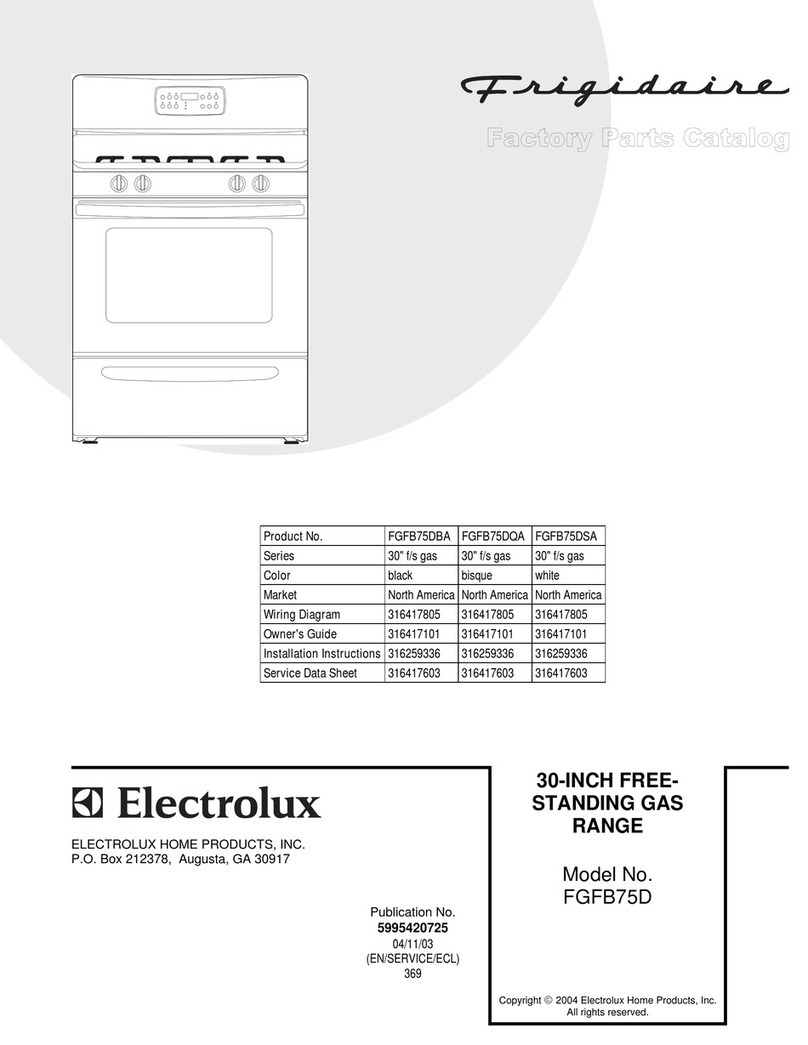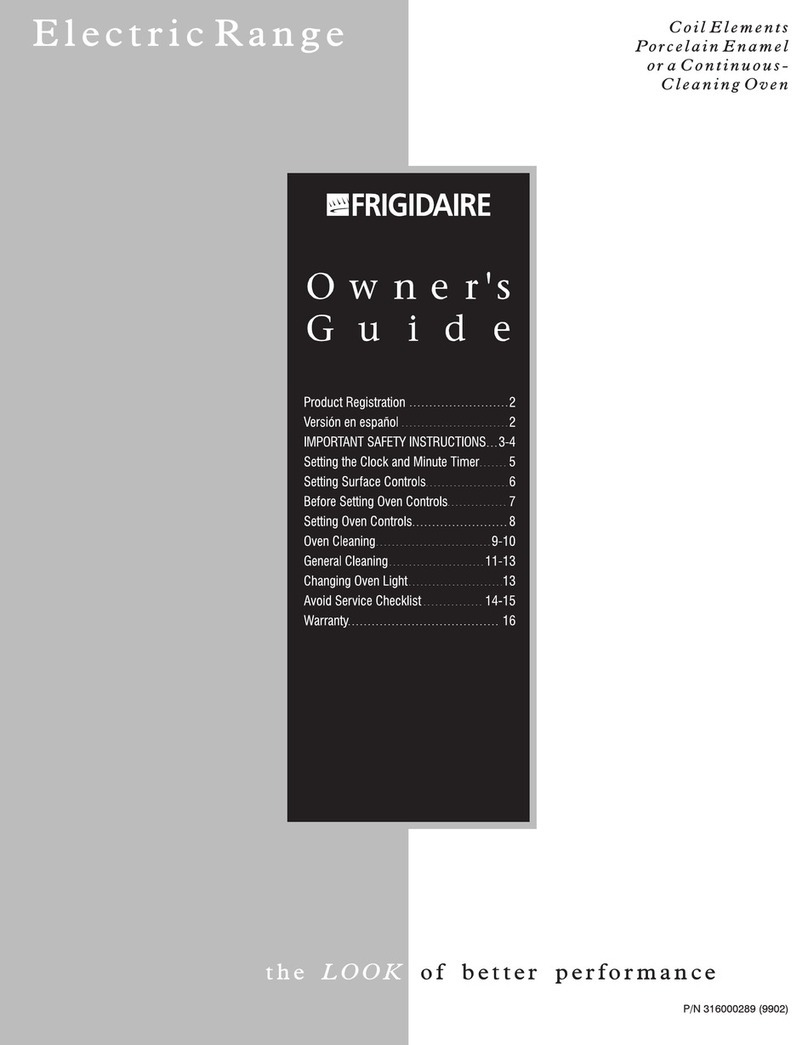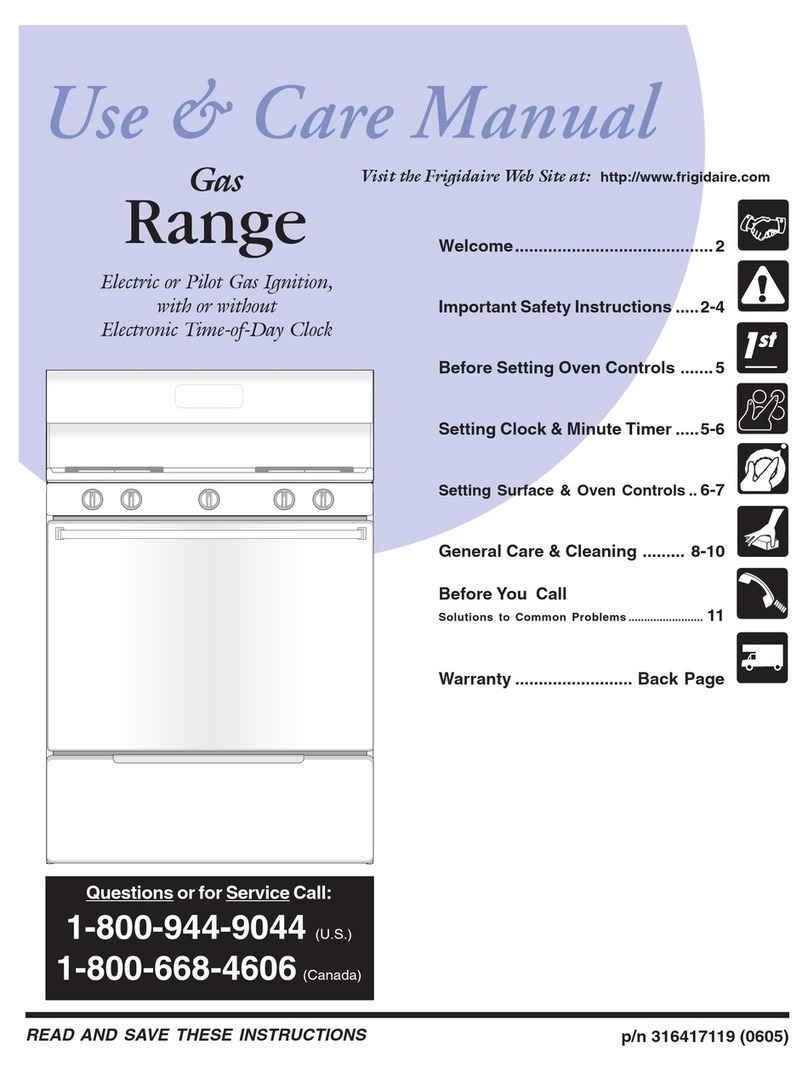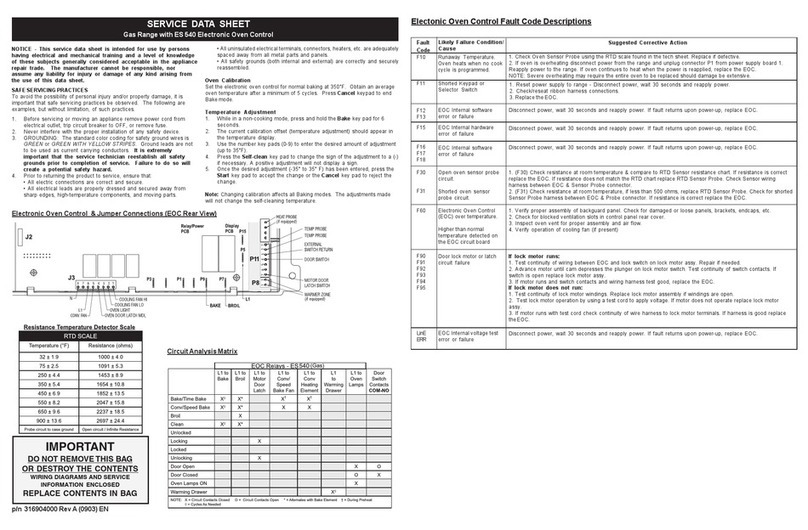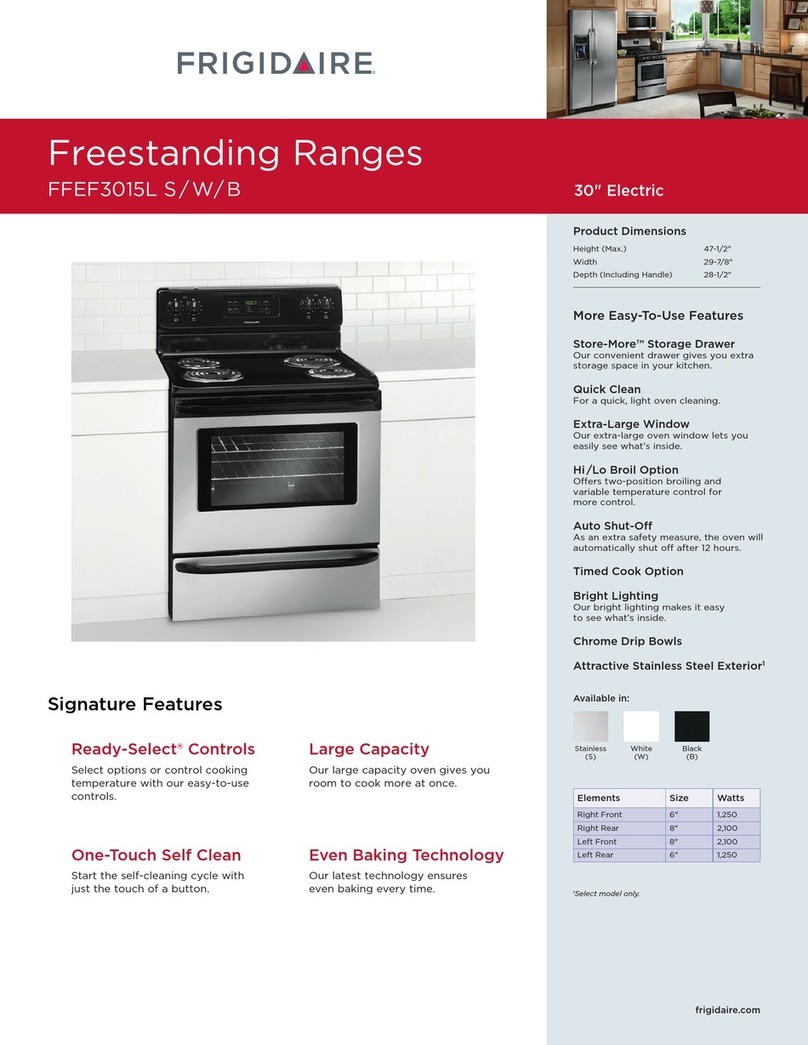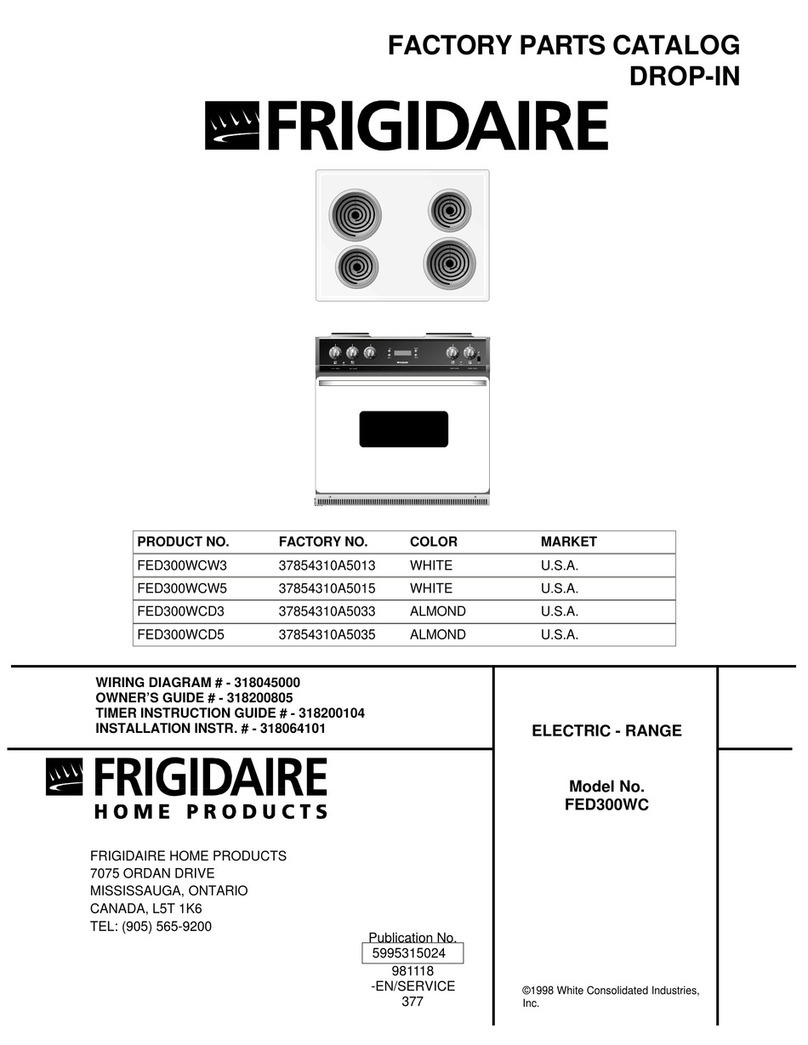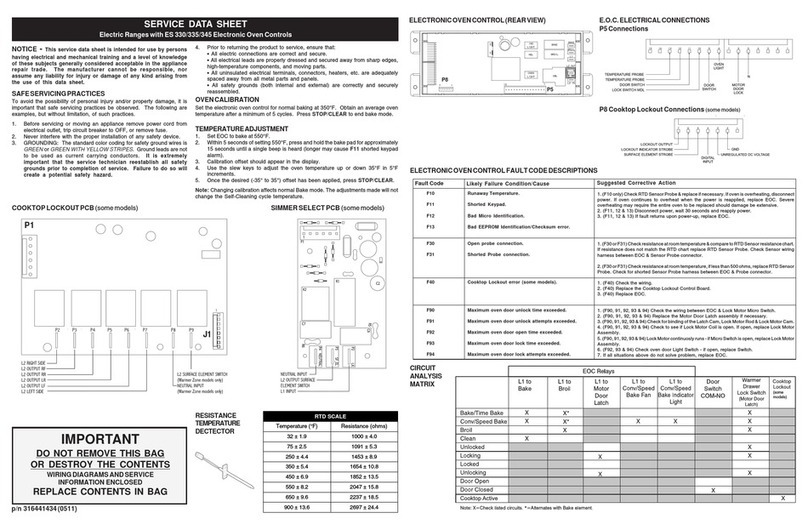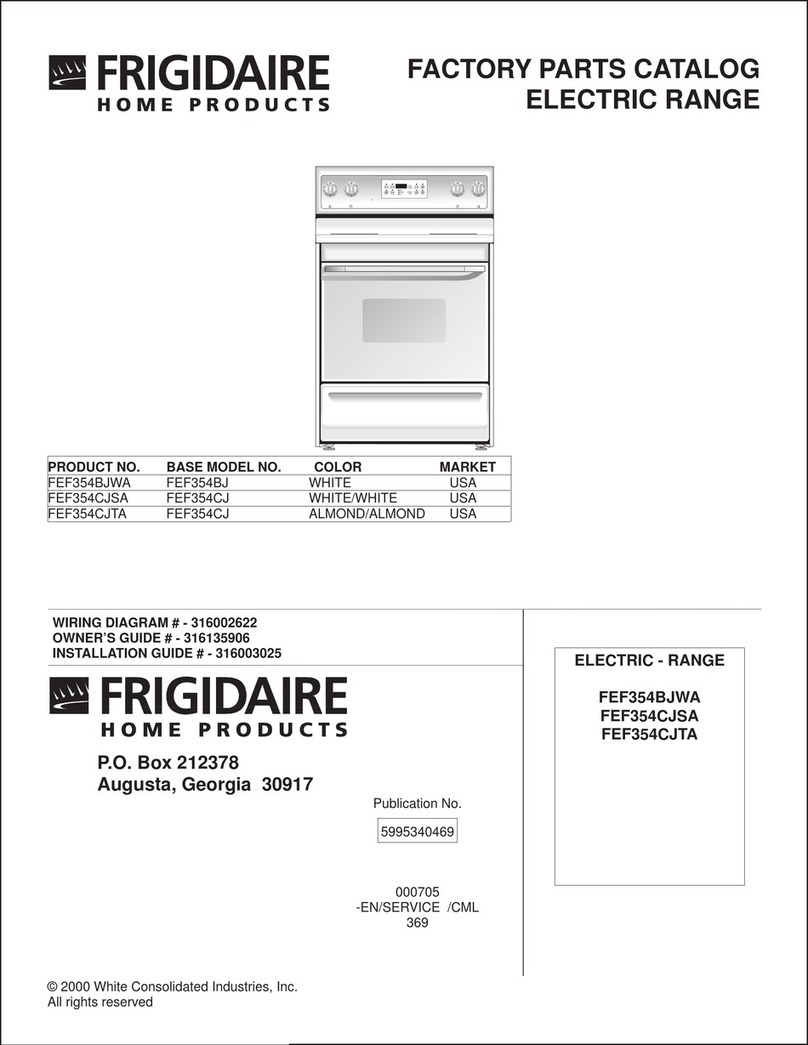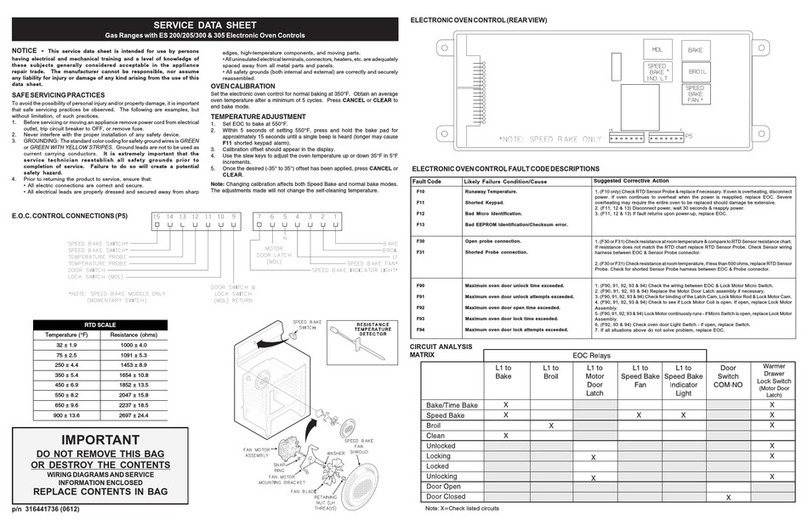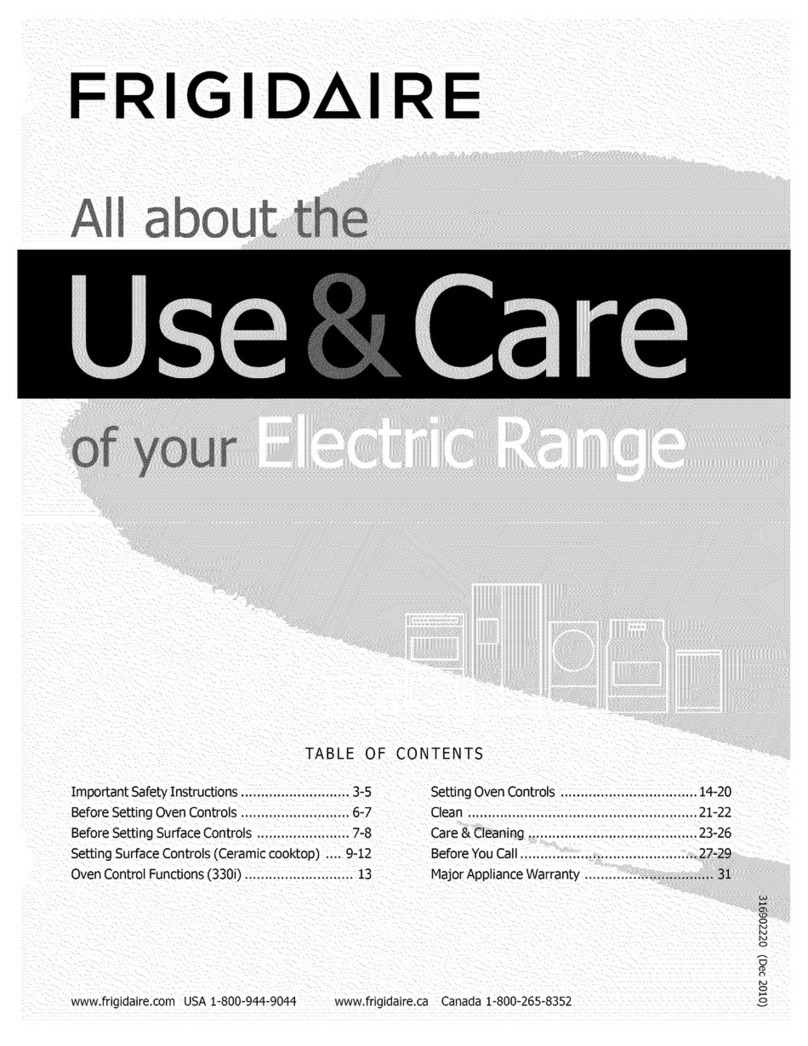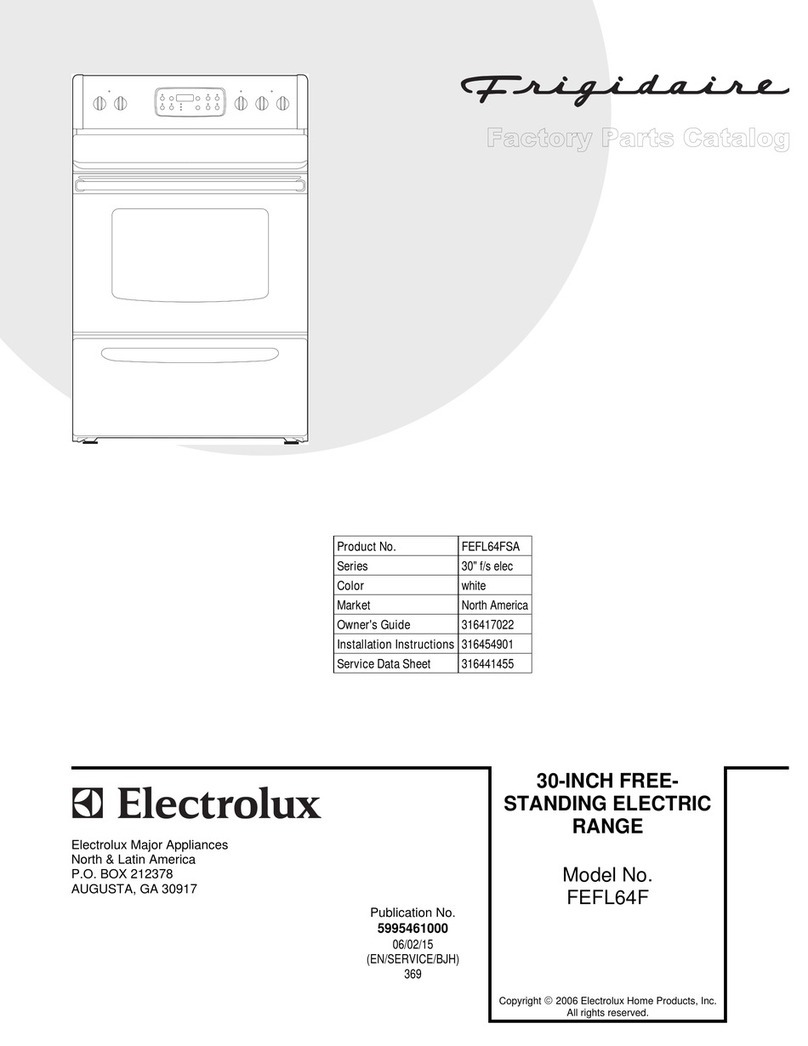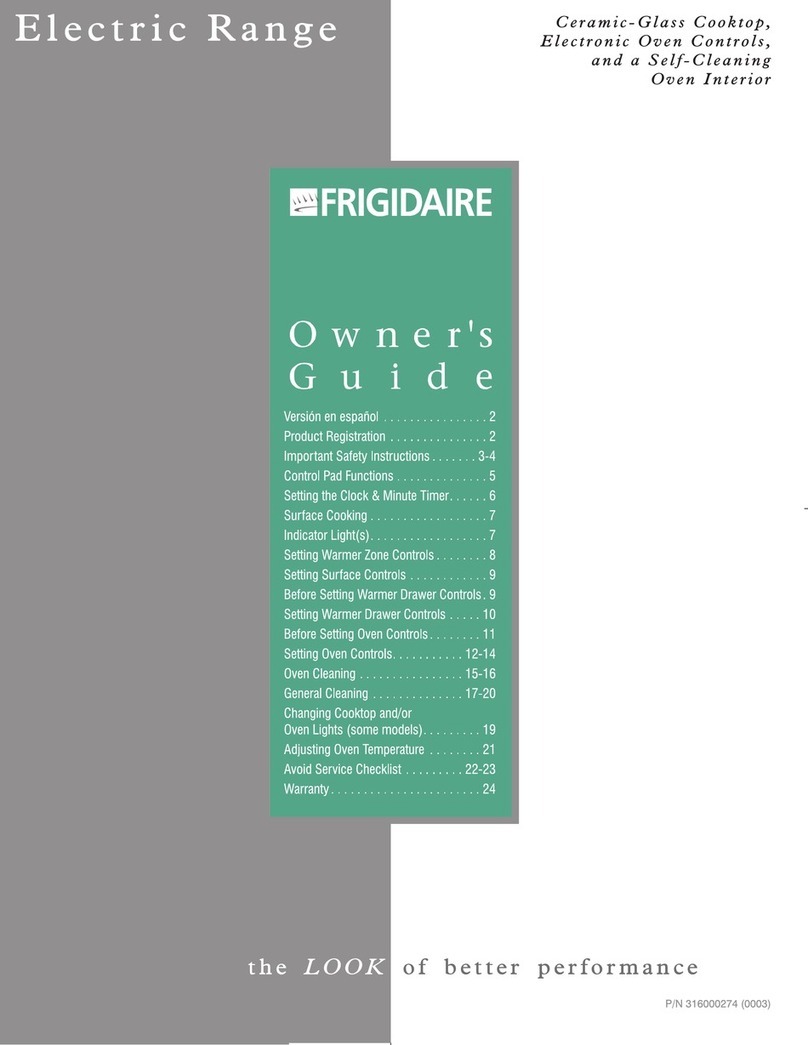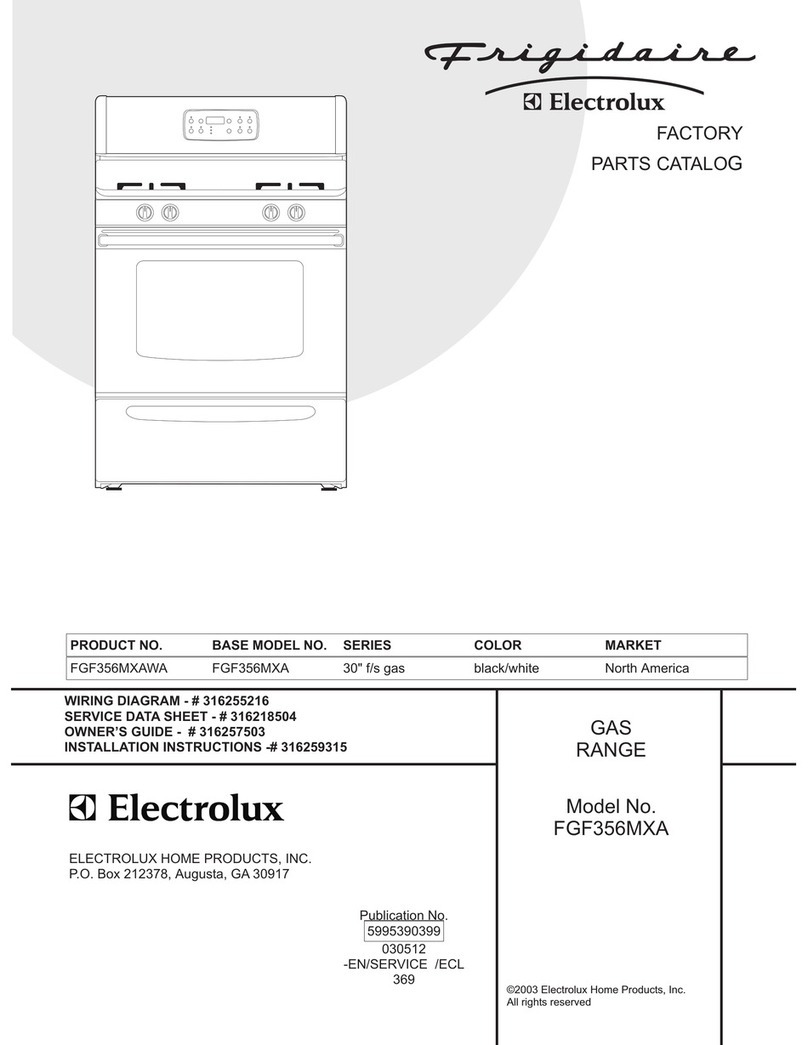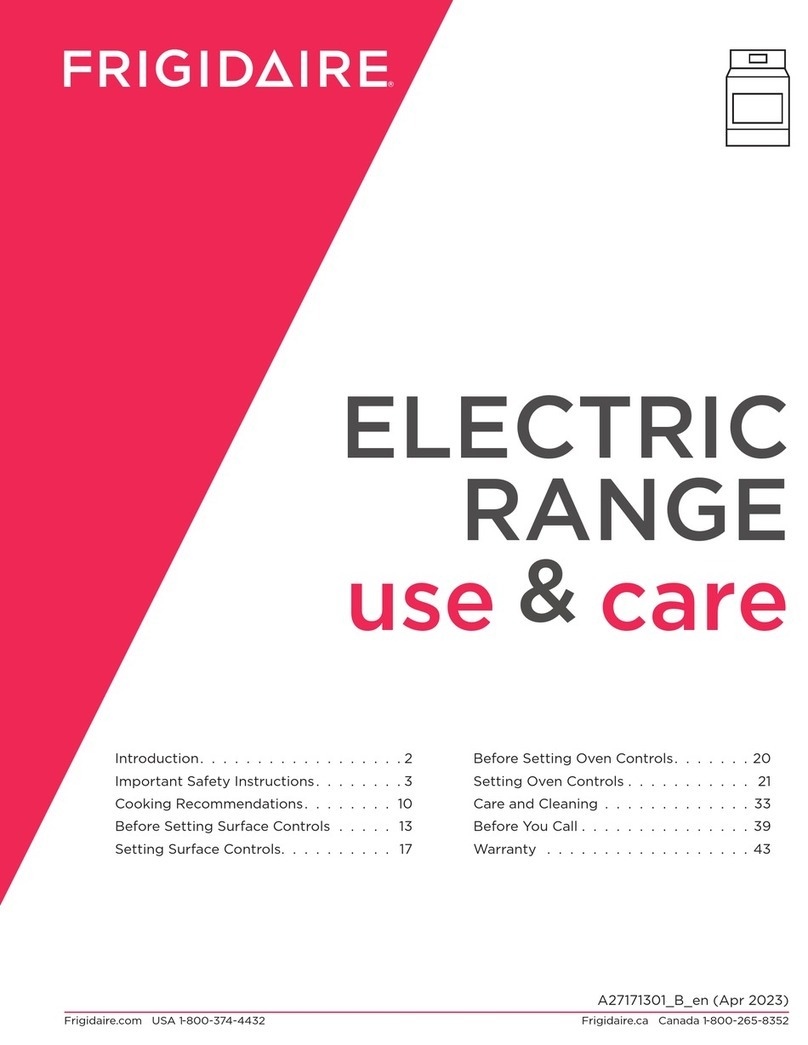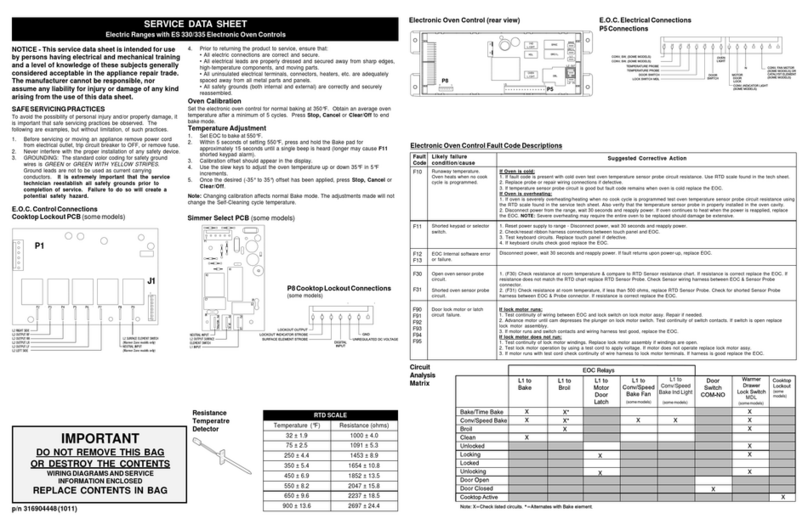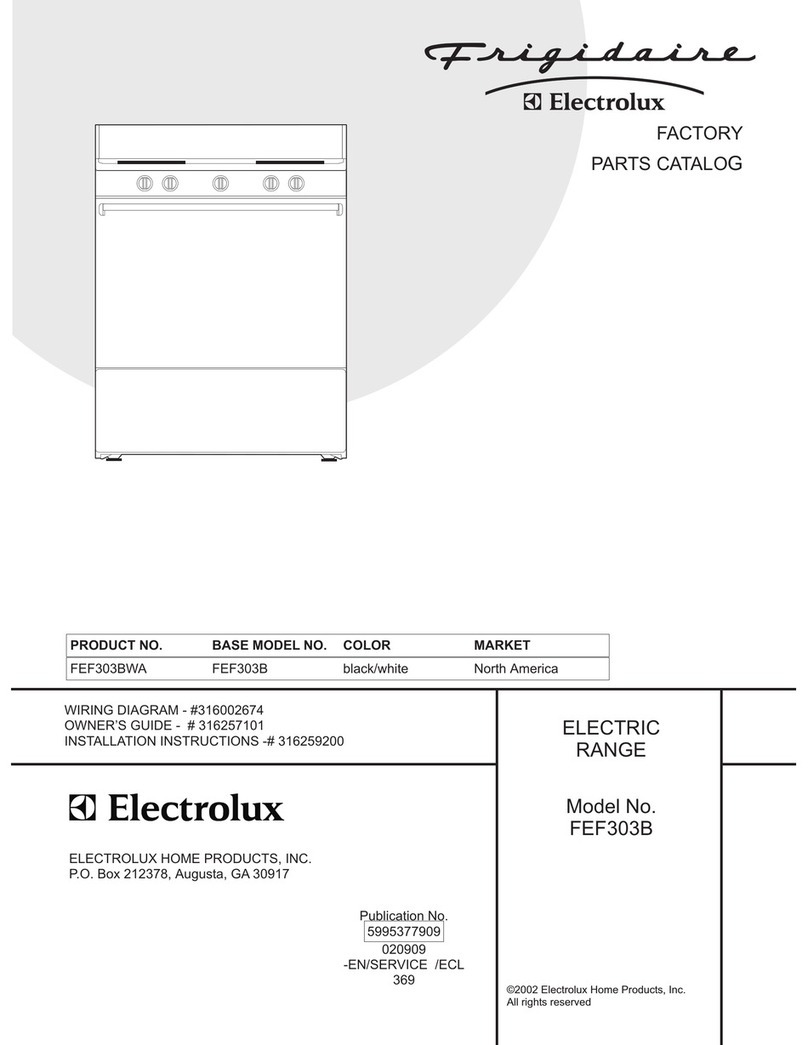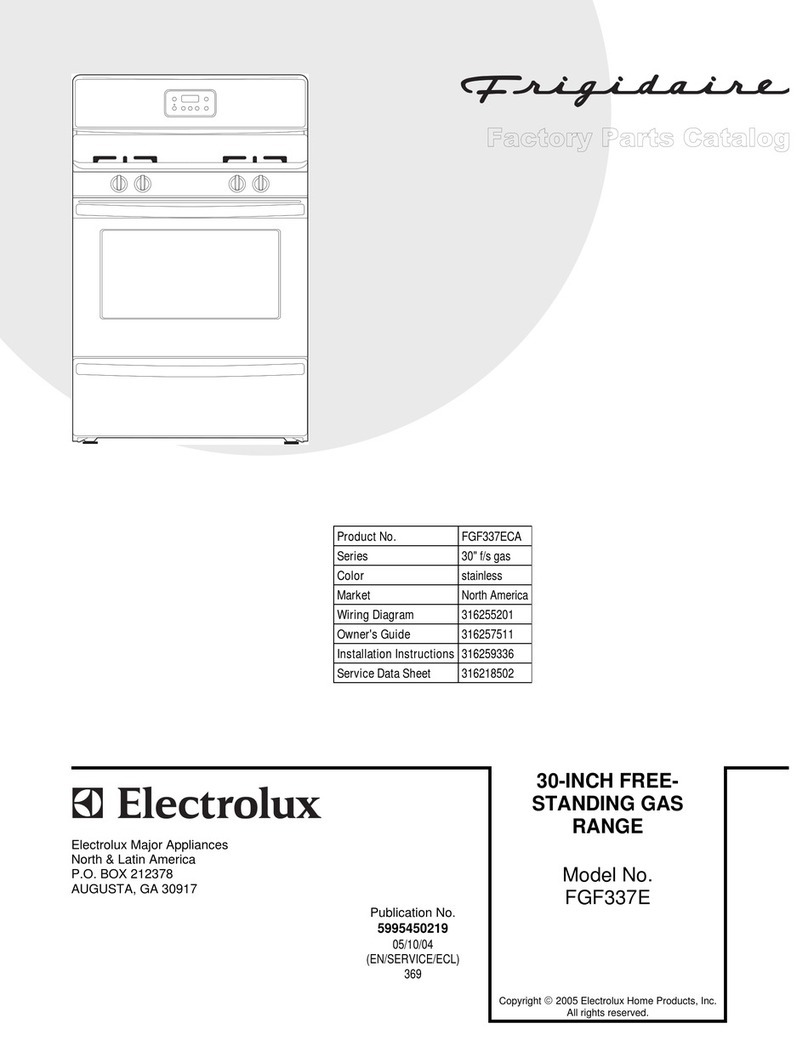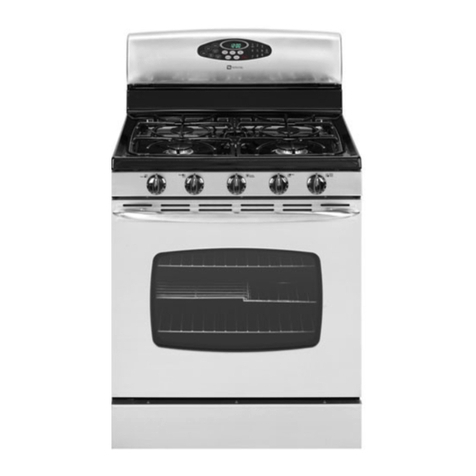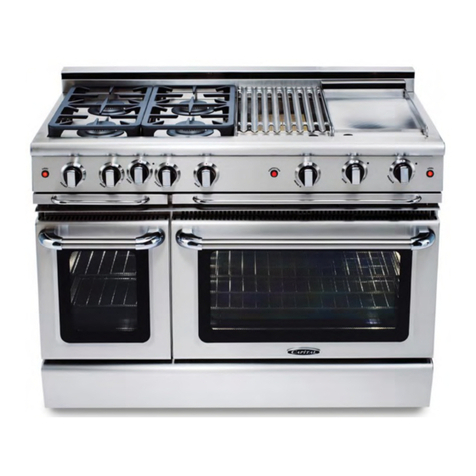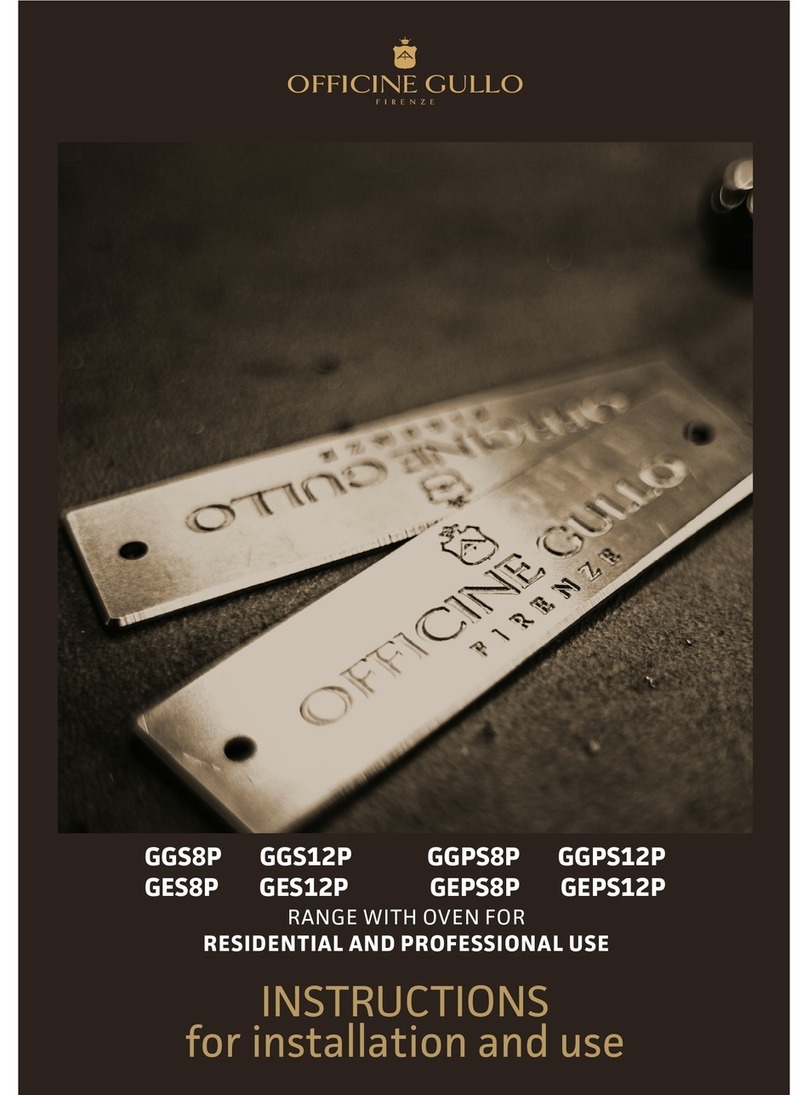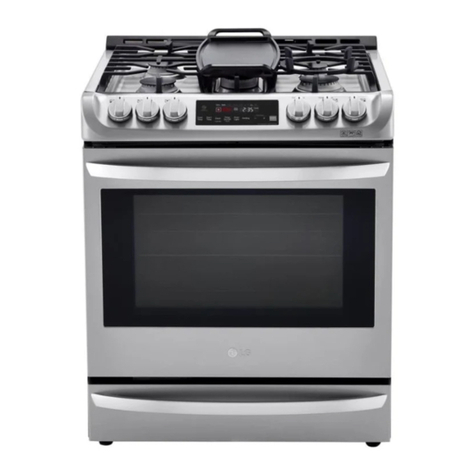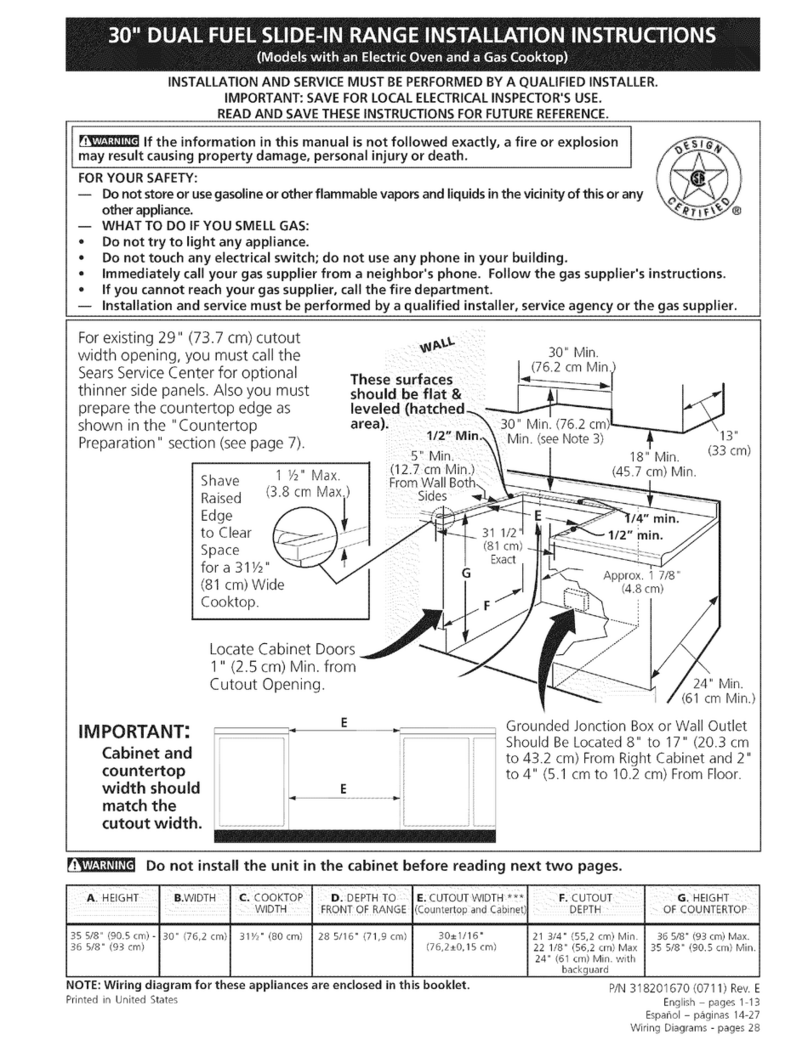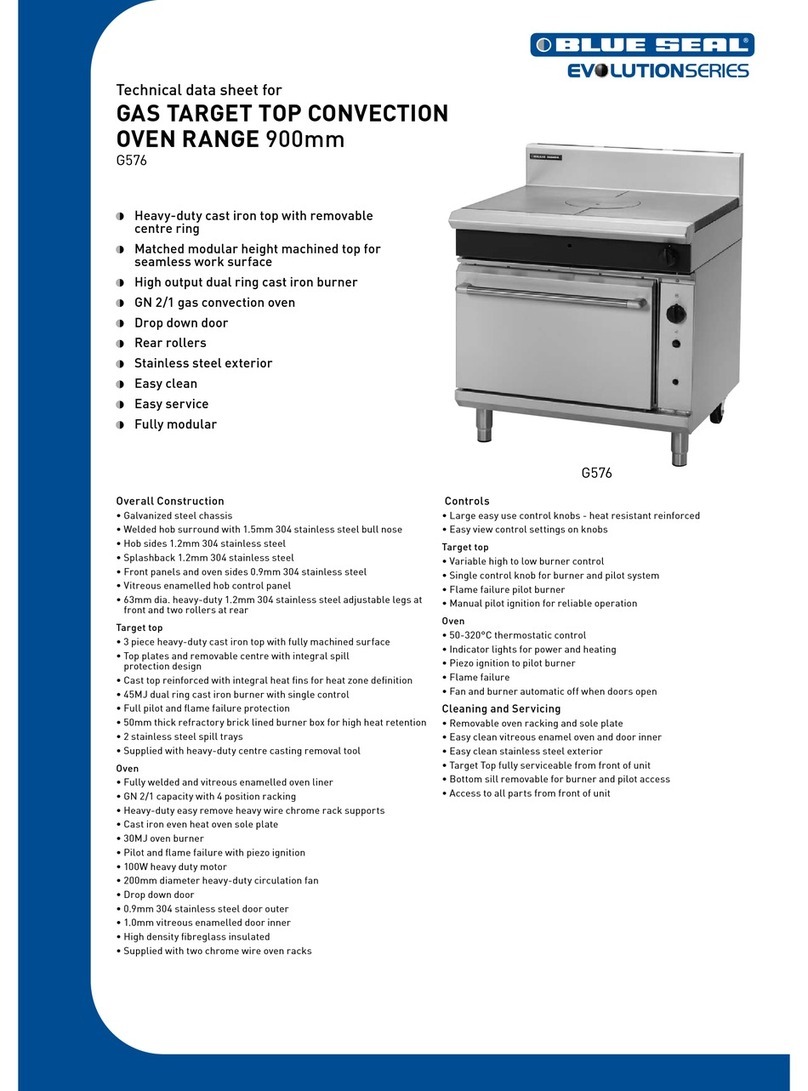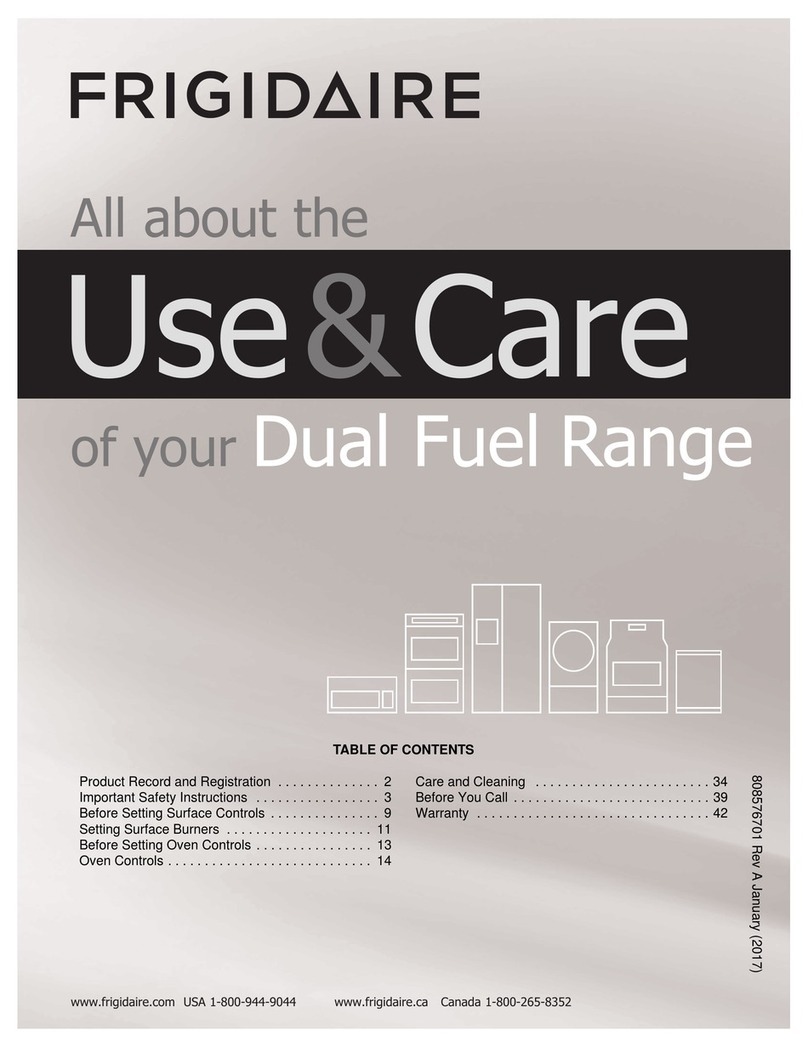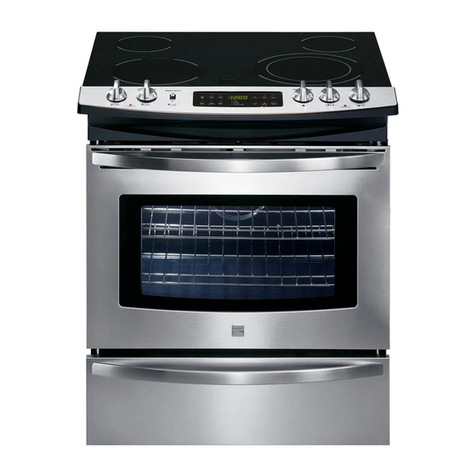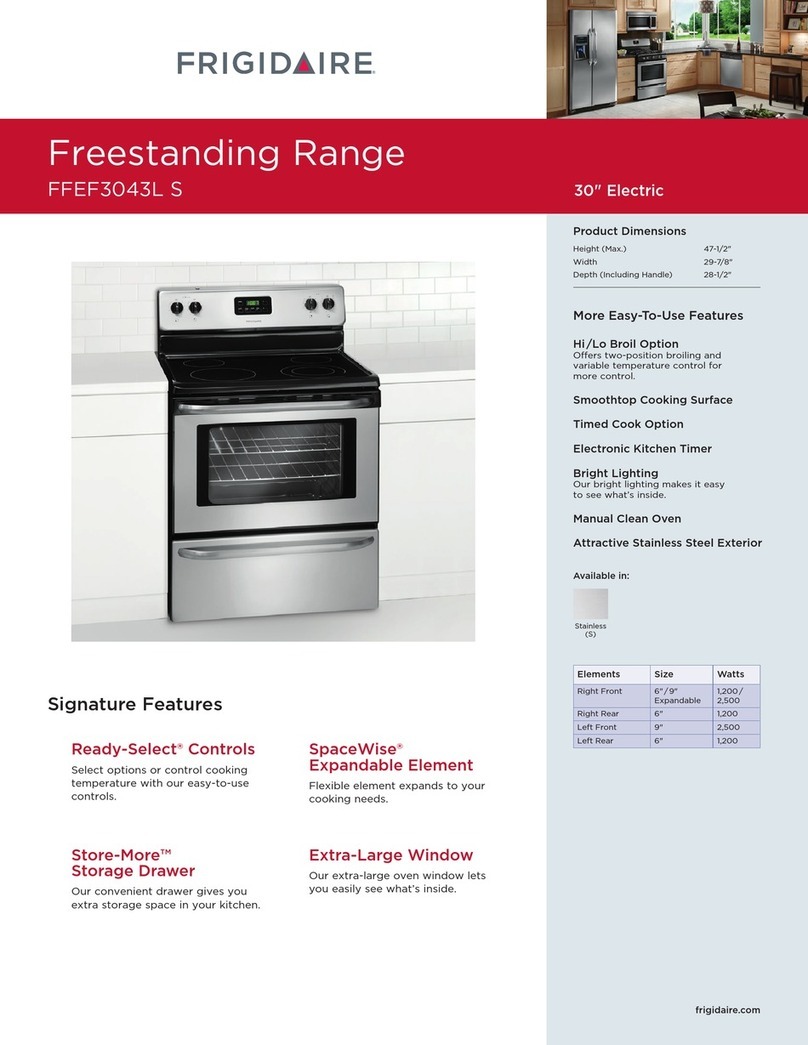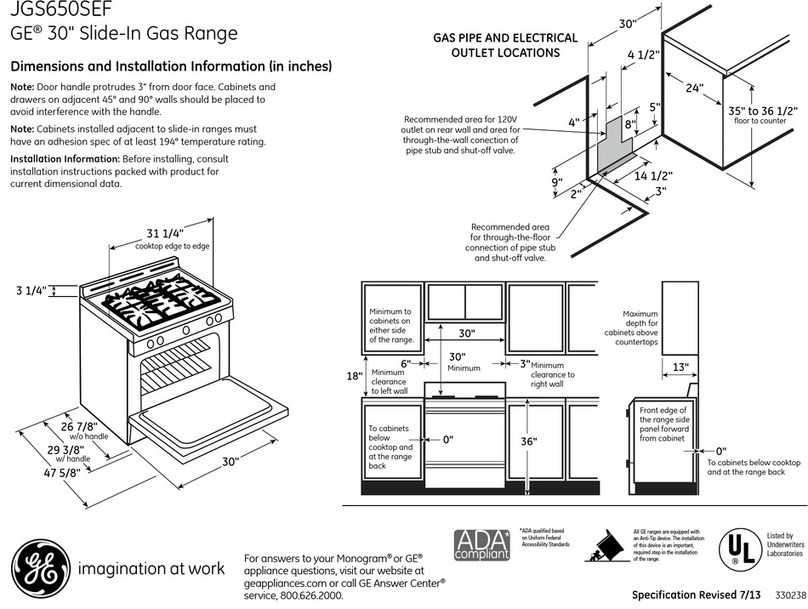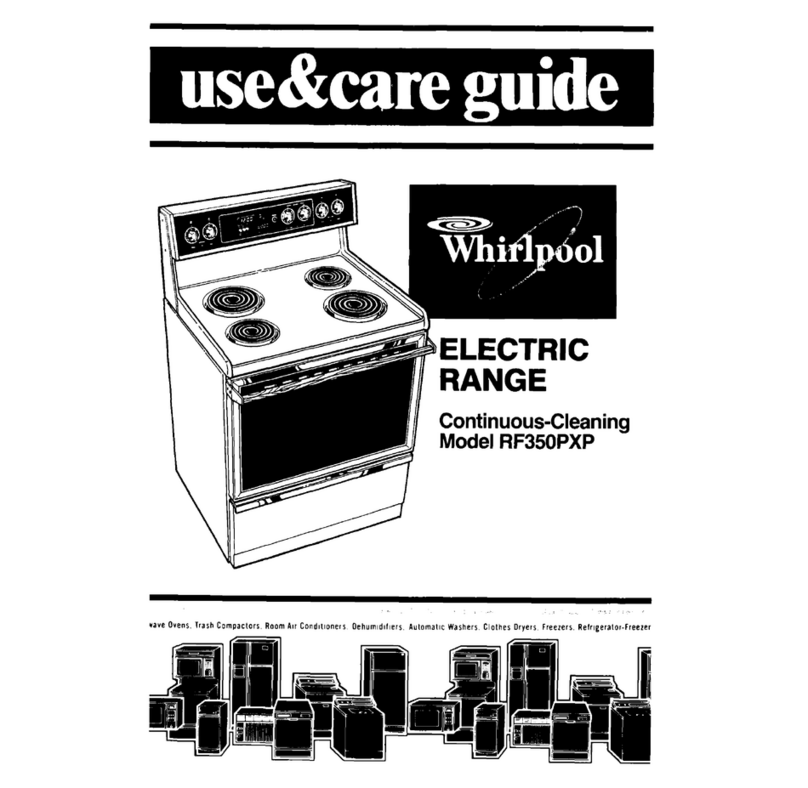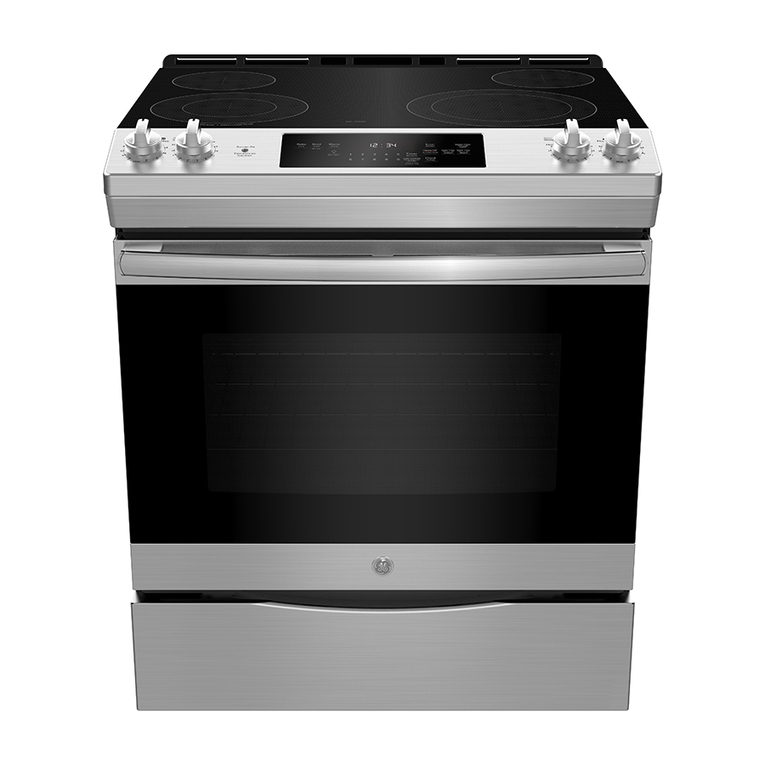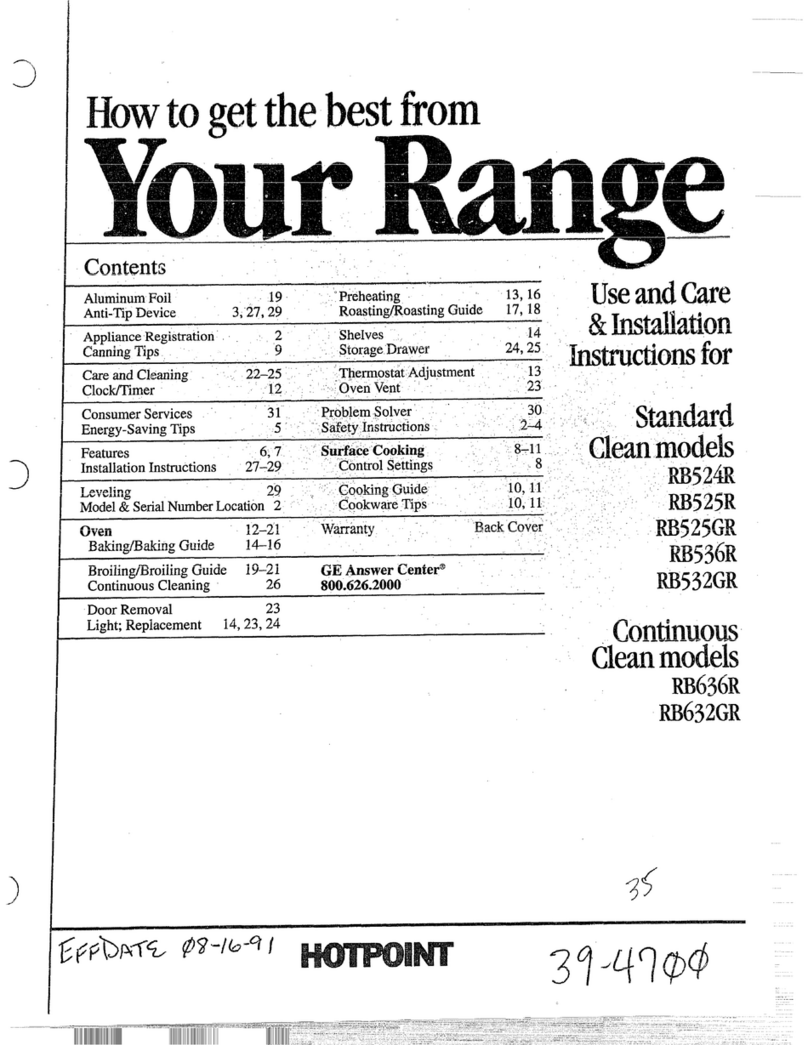
6
IMPORTANT SAFETY INSTRUCTIONS
IMPORTANT INSTRUCTIONS FOR USING YOUR
RADIANT COOKTOP
•Know which knob or key controls each surface
heating area. Place cookware with food on the
cooking area before turning it on. Turn the cooking
area off before removing the cookware.
•Cookware handles should be turned inward and
not extend over adjacent surface elements — To
reduce the risk of burns, ignition of flammable
materials, and spillage due to unintentional contact
with the utensil, the handle of the cookware should
be positioned so that it is turned inward, and does
not extend over other cooking areas.
•Use proper pan size - This appliance is equipped
with one or more surface units of different sizes.
Select cookware with flat bottoms that match the
surface unit size. Using the proper cookware on
the cooking area will improve efficiency.
•Glazed cooking utensils— Only certain types of
glass, glass/ceramic, ceramic, earthenware, or
other glazed utensils are suitable for cooktop
service without breaking due to the sudden change
in temperature. Check the manufacturer’s recom-
mendations for cooktop use.
•Improper cookware may break due to sudden
changes in temperature. Check the cookware
manufacturer’s recommendations for cooktop use.
•Never leave surface elements unattended. Boil-
overs may cause smoking and greasy spills that
may ignite. A pan that has boiled dry could be
damaged and may damage the cooktop.
•Do not use a searing grill meant for use with a
broiler pan on the cooktop. The searing grill is not
designed for use on the cooktop. Doing so may
result in a fire.
•When you are flaming foods under a ventilating
hood, turn on the fan.
IMPORTANT INSTRUCTIONS FOR GLASS AND
CERAMIC COOKTOPS
•Do Not Clean or Operate a Broken Cooktop. If
cooktop should break, cleaning solutions and spill-
overs may penetrate the broken cooktop and
create a risk of electric shock. Contact a qualified
technician immediately.
•Clean cooktop glass with caution. If a wet sponge
or cloth is used to wipe spills on a hot cooking
area, be careful to avoid a steam burn. Some
cleaners can produce harmful fumes if applied to a
hot surface.
•Avoid scratching the cooktop glass with sharp
objects.
IMPORTANT INSTRUCTIONS FOR USING YOUR
OVEN
•Protective liners—Do not use aluminum foil, after-
market oven liners, or any other materials or
devices to line oven bottom, oven racks, or any
other part of the appliance. Only use aluminum as
recommended for baking, such as lining cookware
or as a cover placed on food. Any other use of
protective liners or aluminum foil may result in a
risk of electric shock or fire or a short circuit.
•Use care when opening oven door, lower oven
door, or warmer drawer (some models). Stand to
the side of the appliance when opening the door of
a hot oven. Let hot air or steam escape before you
remove or replace food in the oven.
•Keep oven vent ducts unobstructed. Touching
surfaces in this area when the oven is on may
cause severe burns. Do not place plastic or heat-
sensitive items on or near the oven vent. These
items can melt or ignite.
•Placement of oven racks - Always place oven
racks in desired location while oven is cool. If rack
must be moved while oven is hot, do not let
potholder contact hot burner or element in oven.
Use potholders and graspthe rack with both hands
to reposition. Remove all cookware and utensils
before moving the rack.
•Do not attempt to operate the appliance during a
power failure. If the power fails, always turn off
the appliance. If the appliance is not turned off
and the power resumes, electric surface
elements may resume operation when power is
restored. Once the power resumes, reset the
clock and the oven function.
